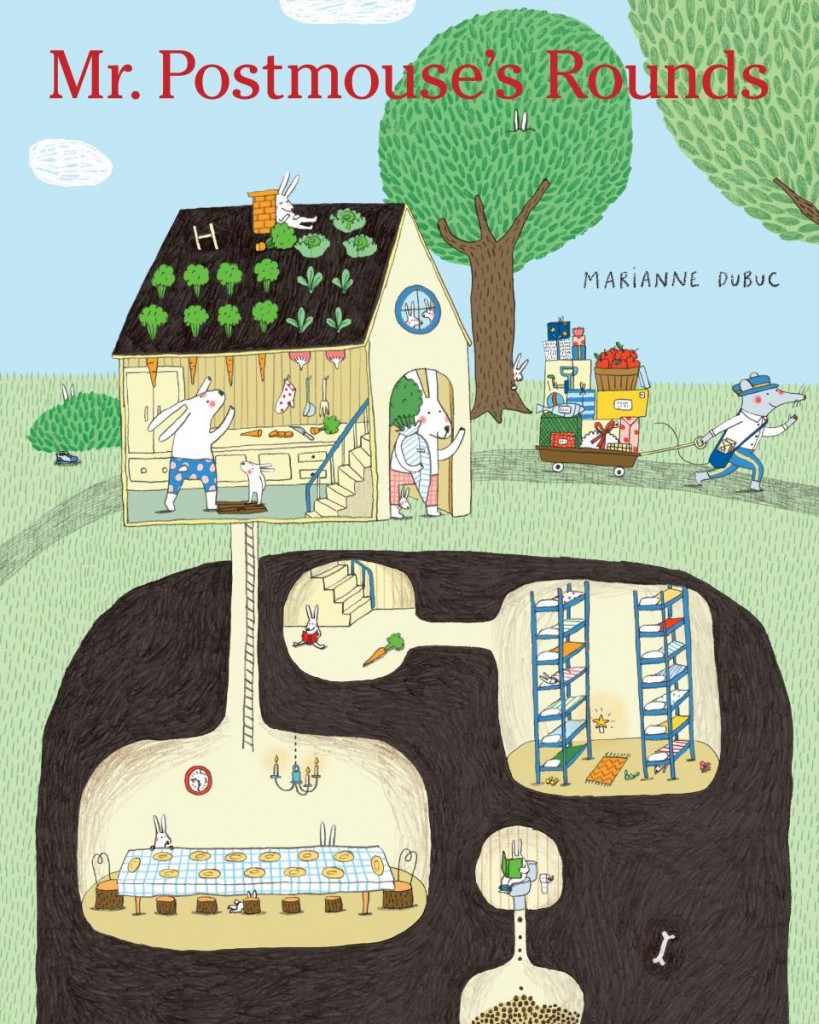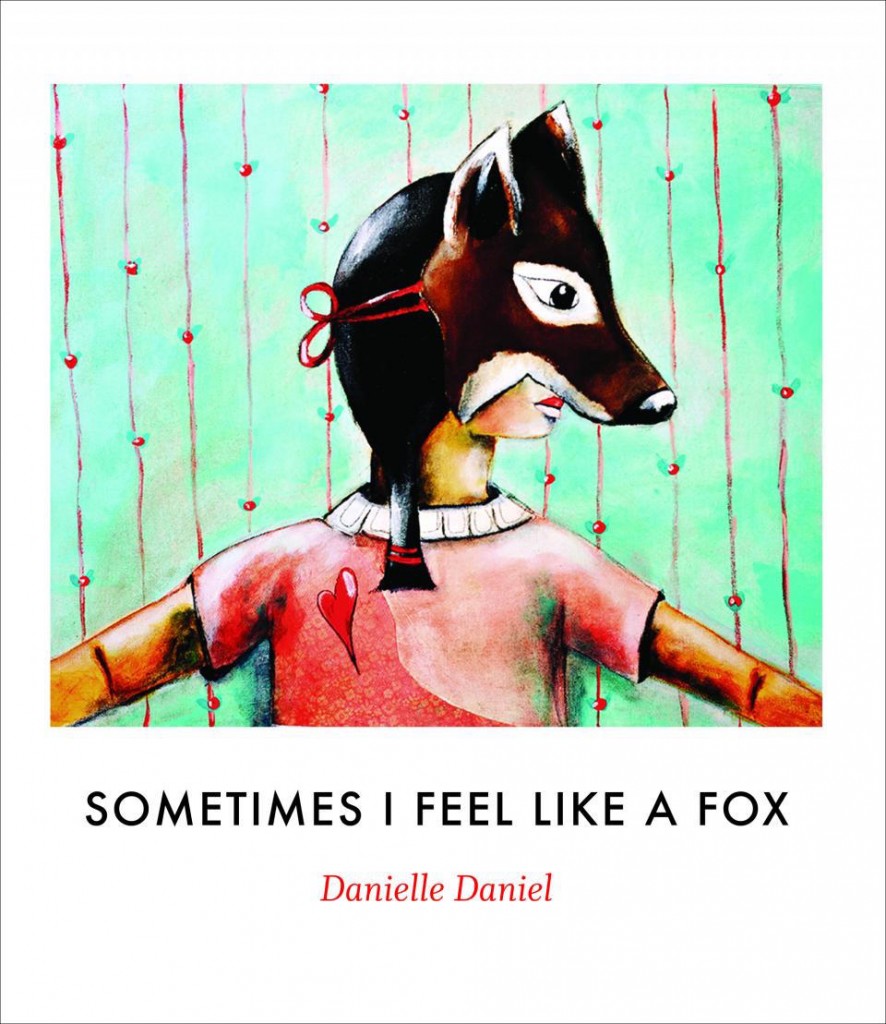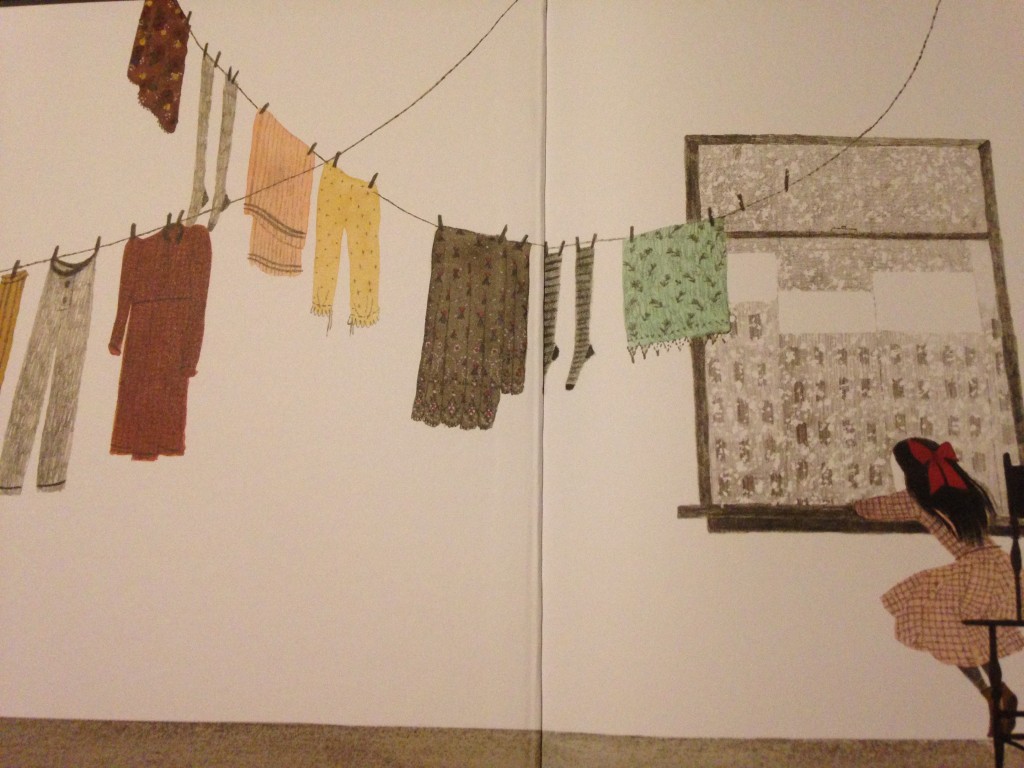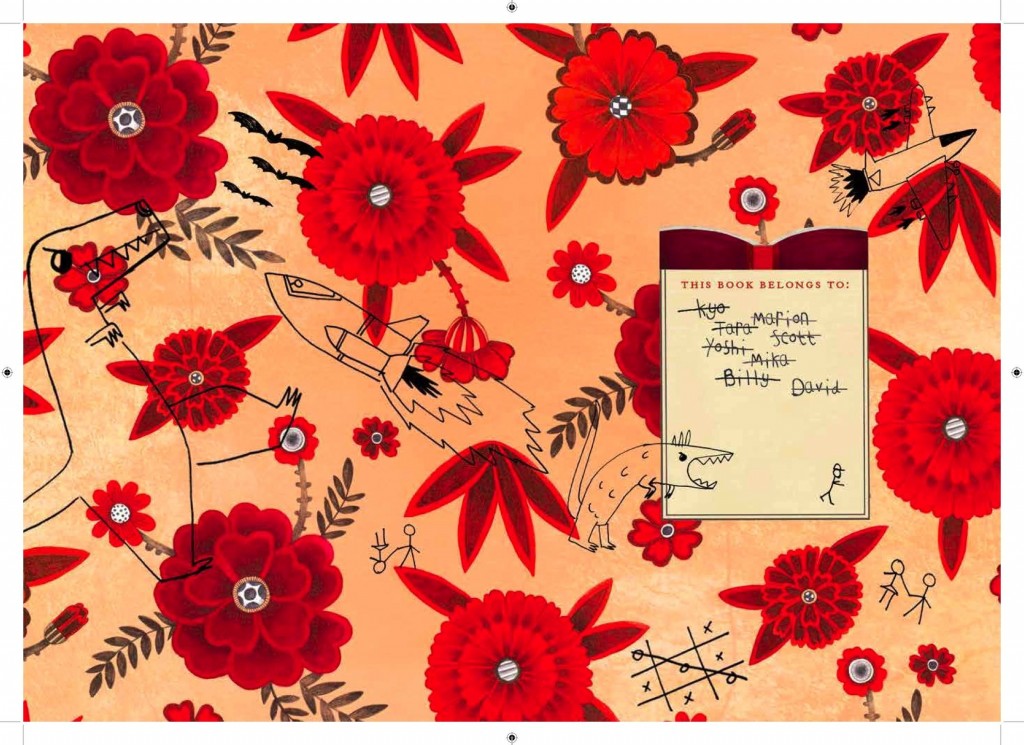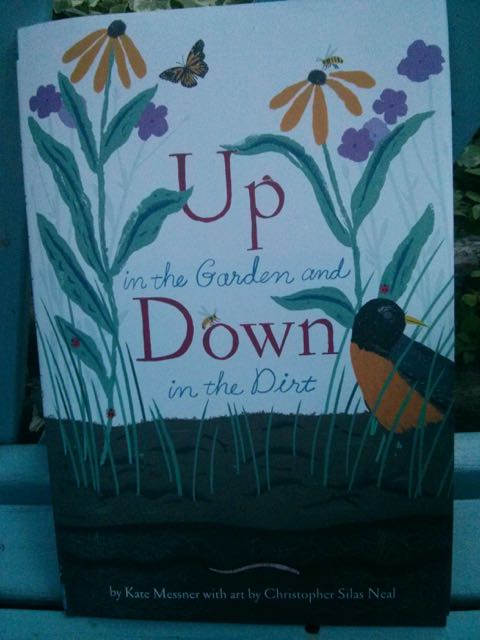October 1, 2015
Mr. Postmouse’s Rounds by Marianne Dubuc
We are a little bit crazy for Marianne Dubuc in our house, which is interesting because she does something very different with every book she writes, but what all her books have in common are elements of whimsy, unabashed absurdity, rewards for those who are attentive to detail, and an all-engaging strangeness. And in Mr. Postmouse’s Rounds, she has written a book about the mail, and so naturally I am totally obsessed. As are my kids, because, well, look right there on the cover: there is a rabbit pooing. Sitting on the toilet reading, no less. And this glimpse into the rabbits’ hidden world is what’s so entrancing about this book, exploring these animal abodes that Dubuc has dreamed up: the bear’s house has honey on tap from a hive on the roof; the snake’s long skinny house is outfitted with heat lamps; the squirrel’s got a clothesline and sleeps in a hammock; the mole house has a kettle on the stove.
It’s the kind of book a kid can read with her finger, tracing along the Postmouse’s route and in and out of the houses he delivers to. While the illustration style is very different, we love it for the same reasons I loved Jill Barclay’s Brambly Hedge books when I was little, tiny worlds magnified, access into hidden corners, such incredible attention to detail. And yes, it’s funny. There’s the poo (and the flies’ house is actually a giant piece of much poo, much to everybody’s delight). And there are abandoned shoes, mitts and candy wrappers littering the animals’ neighbourhood, and just what’s going on in each of these dwellings? Each house containing a story of its own, so that you can read Mr. Postmouse’s Rounds over and over again and—which I know from experience—the young reader will continue to keep exploring its pages long after the reading is done.
September 24, 2015
Solid Gold
This week for Picture Book Friday, I bring you the October issue of Quill and Quire, which is on newsstands now. As part of their special Kidlit Spotlight, I took part in a panel discussion focussed around the question, “Are we living in a golden age of Canadian picture books?” It was a very neat, informative and wide-ranging discussion with a bunch of kidlit experts (of which I am now—it’s official). As someone with strong opinions about most books I read, good and bad, it was interesting to hear from others with different points of view. (This is the reason I’m never going to start the blog I was born to write, called “Picture Books I Really Hate”, because these things are so subjective.) It was also really interesting to learn from people whose roots in Canadian children’s books go back to the 1970s (which is basically when Canadian children’s literature began) and find out what is different and what has stayed the same. And is this a golden age? I really do think so. I was pleased that my quotation from Ursula Nordstrom closed our discussion, about books that are written from the outside in, versus books written from the inside out (i.e. the best kind). And there is such a greater level of sophistication in Canadian books at the moment, even by the same writers who were working 30 years ago. Kathy Stinson’s Red is Best is a classic, timeless and fantastic children’s book, but her recent award-winning The Man With the Violin is on a whole other level, which is where so many picture books are appearing these days. It’s a real pleasure to be a part of this literary moment.
Also in the issue are great children’s book reviews, and plenty of other good stuff. Make sure you pick up a copy!
September 17, 2015
Buddy and Earl, by Maureen Fergus and Carey Sookocheff
There are books, and there are books, and even in the realms of the best books, there are the books my children like and the books that I do. And Buddy and Earl, by Maureen Fergus, illustrated by Carey Sookoocheff, manages to be both.
Stories of unlikely pals abound in picture books, and Buddy and Earl is refreshingly different. The characters’ relationship is not built on their respective differences (and learning to appreciate and respect them, blah blah blah) but on highly individuated interactions. Buddy is not just DOG, but A dog with best intentions, insatiable curiosity and a tendency to forgo the rules. Earl is a bad influence with a remarkable imagination and is ever-so-cool that butter wouldn’t melt.
But what is Earl exactly? Answering this question is Buddy’s first task in their relationship, and while Earl attempts to steer him wrong (and have a bit of fun: “I’m a race car!” “I’m a sea urchin.”) before finally revealing his real identity: “The truth is that I’m a talking hair brush.”
Buddy, who’s a bit simple-minded, uses all the rational powers at his disposal to get to the heart of the matter of Earl: “You do not have a steering wheel. You do not have wheels. I do not think that you’re a racecar, Earl.” Or, “You look like a sea urchin, Earl, but I do not think you are a sea urchin. You see, sea urchins are underwear creatures and the living room is not underwater.” Turns out Buddy is not so simple after all. (And reading this deadpan dialogue aloud is so much fun.)
BUT. It turns out the living room IS underwater, or at least it is in the game that Earl ropes Buddy into, a game of pirates, in which the ship is the couch—a dog no-go zone. The two embark upon an eventful voyage with lots of noise and tomfoolery, so that Buddy eventually gets into trouble and Earl gets off scot-free. Because who ever imagined that an innocent hedgehog could cause so much trouble?
In the end, neither is able to identify the other in a taxonomic sense, but both decide it doesn’t matter. Because what are Buddy and Earl after all? Well, they are friends. And this adventure is just the beginning, because there are two more books in store. We are looking forward to them.
September 10, 2015
Daisy Saves the Day, by Shirley Hughes
 British institutions collide in today’s Picture Book Friday pick, in which the great Shirley Hughes pens a picture book right out of Downton Abbey with bunting as a major plot point. I know.
British institutions collide in today’s Picture Book Friday pick, in which the great Shirley Hughes pens a picture book right out of Downton Abbey with bunting as a major plot point. I know.
The book is Daisy Saves the Day, about a young girl who has to leave school and take a job as a scullery maid in a grand house in London in order to earn money to help care for her younger siblings. Which was not such a remarkable path for a young girl of her class, but Daisy herself is quite remarkable, bright and clever, hardworking at school. She’s also not particularly good at, well, scullery-ing. Her employers’ modern and unconventional niece, who is visiting from America, wrangles her permission to browse the house’s extensive library however, which makes Daisy’s life a little less lonely.
The story takes place during the summer of 1901 when George V was crowned, and the streets of London were decked in Union Jacks, flags and streamers. (The text doesn’t explicitly say “bunting,” but them there triangles are not just any flags, are they….) Except that Daisy’s house remains plain and unadorned—her employers, The Misses Simms, considered the decorations vulgar. And Daisy, naturally, is disappointed to not be part of the fun.
Ever-enterprising, however, she devises a cheeky way to join in, fashioning a string of bunting out of dishcloths and pillowcases and BRIGHT RED BLOOMERS, no less.
Which, of course, gets her in hot water with the Misses Simms, and poor Daisy is landed in disgrace. She’s given so many extra chores that by the end of the day, she’s too tired to even read. But never fear, there will BE redemption. When one night Cook hangs dishcloths a bit too close to the fire and then nods off, it is Daisy who smells the smoke and rushes to the kitchen to help put the fire out, saving the day, as per the title.
The Misses Simms are so impressed with their young charge that they bestow on her the ultimate gift: they free her from service and offer to pay for her schooling. Because “…it seems to me that you are better at reading than at polishing and scrubbing.” Indeed. And then a happy ending, because Daisy gets to go home to her mother and her brothers. A cheerful end to a cheerful tale, gorgeously rendered in classic Shirley Hughes style, and with endpapers decorated with vintage advertisements for household cleaning products.
We loved this one!
Check out the Daisy Saves the Day website, with more information about the book and activities too.
September 4, 2015
Sometimes I Feel Like a Fox, by Danielle Daniel
Today’s Picture Book Friday pick is Sometimes I Feel Like A Fox, by Danielle Daniel, a gorgeous book that my kids love whose meaning is made all the more poignant by its dedication: ““to the thousands of Metis and Aboriginal children who grew up never knowing their totem animal.” Our world is a very complicated place, but I continue to maintain that one very simple thing we can do toward reconciliation with our Metis and First Nations peoples is ensure that our children know their stories, and not just the stereotypes they encounter in so much of classic children’s lit or the “dead Indian” tropes that Thomas King presents in The Inconvenient Indian. And one thing we can do toward healing and ameliorating the status of Indigenous women in Canada is to buy their books, have their stories told. (See the list: Books by Canadian First Nations and Inuit Women.) And so to those ends, picking up a book like this is an important political act.
It’s also a most rewarding literary one.
August 27, 2015
Swan, by Laurel Snyder and Julie Morstad
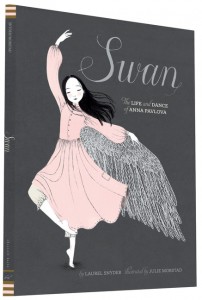 The thing about a book illustrated by Julie Morstad is that you’ve just got to buy it, because Julie Morstad books are an occasion, the occasions not at all diminished by the fact that she’s been very prolific lately and her books coming out every few months now. (Recently: Julia, Child; This is Sadie.) I’ve been particularly looking forward to her collaboration with Laurel Snyder, because I’ve been an admirer of Snyder (who is pretty prolific herself) since before she’d ever written a book, when I was an avid follower of her long-ago blog (except then we called ourselves readers and not followers). I even have a copy of her 2007 poetry collection (for grown-up people), The Myth of the Simple Machines, whose cover image is more than a little Julie Morstad-esque.
The thing about a book illustrated by Julie Morstad is that you’ve just got to buy it, because Julie Morstad books are an occasion, the occasions not at all diminished by the fact that she’s been very prolific lately and her books coming out every few months now. (Recently: Julia, Child; This is Sadie.) I’ve been particularly looking forward to her collaboration with Laurel Snyder, because I’ve been an admirer of Snyder (who is pretty prolific herself) since before she’d ever written a book, when I was an avid follower of her long-ago blog (except then we called ourselves readers and not followers). I even have a copy of her 2007 poetry collection (for grown-up people), The Myth of the Simple Machines, whose cover image is more than a little Julie Morstad-esque.
Morstad and Snyder’s collaboration, Swan, is a picture book biography of the ballerina, Anna Pavlova.
For anyone with a thing for laundry lines in literature (and there are many of us!), this book is for you. It’s the story of a young girl (born in 1881, as the note from the author at the end informs us) whose world is transformed when her mother takes her to see Sleeping Beauty at the ballet.
“Now Anna cannot sleep. Or sit still ever.” Even as she works with her laundress mother, she is thinking about dancing. “She can only sway, dip, and spin…”
The route to success is not so direct. Anna does not get into ballet school on her first try. Once she is admitted (“The work begins. The work? The work! Up and down and back and turn and on and on… Again! Again! Again!”), it is generally assumed that she does not have the right body type, too strange feet for ballet. But she flourishes. Five years into her career, she dances her most famous role: The Swan.
Swan reminded me of Barbara Cooney’s Miss Rumphius, the story of a young woman with fierce ambitions who also wishes to make the world more beautiful. Anna Pavlova does this not by planting lupines, but by bringing her art to people around the world who’d never before had access to the elite world of ballet. “Across bullrings and the warped boards of dance halls, she moves everyone. The sick and the poor come to meet her boats and trains, they cheer her, and are cheered.”
I love the fashion (that cloche hat!) in Morstad’s illustrations, and the gorgeous costumes. I also love the footsteps in the snow, which reminds me of Singing Away the Dark, by Caroline Woodward, one of my favourite Julie Morstad titles. Snyder’s prose is full of its own kind of music, sound and rhythm, repeating patterns, a contrast of soft and quiet tones, the reader wholly engaged in the narrative. It’s a book that begs to be read aloud: “There’s a swell of strings, a scurry of skirts. A hiss and a hum and… HUSH! It’s all beginning!”
Full disclosure necessitates that I tell you that Harriet isn’t quite as mad for this book as I am. She admires much about it, but says she finds the ending much too sad. While I really love the ending, how Anna Pavlova’s death is represented as another beautiful performance. (The author’s note explains that Pavlova was calling for her swan dress in her fever.) I appreciate that death is necessarily part of the story, and how gorgeously Snyder puts it: “Every day must end in night. Every bird must fold its wings. Every feather falls at last, and settles.”
“Can I still read it anyway?” I ask Harriet, and she says I can.
I have a feeling it’s going to grow on her.
August 13, 2015
Three New Books About Loss
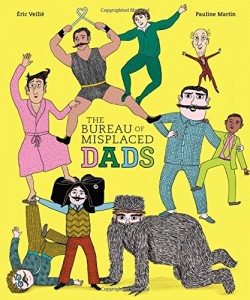 The Bureau of Misplaced Dads, by Eric Veille and Pauline Martin
The Bureau of Misplaced Dads, by Eric Veille and Pauline Martin
This book has a vintage vibe right down to its oranges, greens and yellows, the crosshatching, and that the illustrations remind me so much of Esphyr Slobodkina’s Caps for Sale—perhaps it’s the moustaches? It also is completely weird in that way picture books got away with back in the day. Utterly pointless, silly, absurd, and I mean it in the best way. (Maybe it’s just European?) It’s about a boy who loses his dad one morning and finds assistance at the Bureau of Misplaced Dads, where lost fathers go to wait for their children to retrieve them. (Most are in fairly good condition when they’re finally found.) Some are found same day, others have been waiting since the dawn of time. “The dads in striped sweaters hang out in the Ping-Pong room.” They aren’t allowed to play with the crocodiles, but otherwise they can do anything they please. There are two full-page spreads that are totally Wild Rumpus-inspired. The ending will satisfy anxious readers, but is just as strange as rest of it, which is to say that it involves a short cut in which the boy climbs up the ladder beside an old dog, and arrives home via a hole in the floor. Hooray for short-cuts, and books rich with strange surprises.
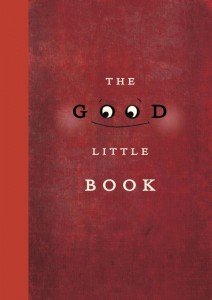 The Good Little Book, by Kyo Maclear and Marion Arbona
The Good Little Book, by Kyo Maclear and Marion Arbona
I was rhapsodizing about Kyo Maclear a couple of weeks back because she’s managed to have two books out this fall that are very different and both excellent—she’s so good! The Good Little Book is a gorgeous package, its deliberate graffiti’d bookplate and endpapers, the whole thing beautifully designed to emphasize the book as object, which connects to the story. About one book in particular that is “neither thick nor thin, popular nor unpopular. It had no shiny medals to boast of. It didn’t even own a proper jacket.” (Get it? Jacket?) But this little book finds its way into one reader’s heart, and there it stays, accompanying the reader everywhere, changing his life. Until one day the book gets lost. The boy who lost it fearing for his book in the wild, seeing as it doesn’t even have a jacket. (Ha!) But a good book, the boy learns, never really goes away, and the book itself, we learn, continues to be loved and read, as good books do. “Is this the end of the book?” is the question inked upon the final pretty floral endpaper, to which this reader knows the answer: never!
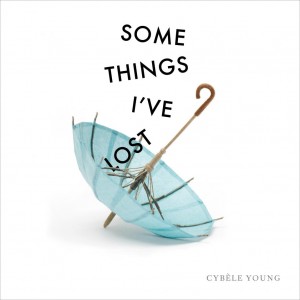 Some Things I’ve Lost, by Cybele Young
Some Things I’ve Lost, by Cybele Young
As one who has long been intrigued by the secret lives of things, I’m intrigued by Cybele Young’s new book, which is inspired by her paper sculptures. A set of keys, a roller skate, an umbrella (and I do have a fascination with literary lost umbrellas), a pair of glasses. Things that disappear (and I’ve written about that too). But: “Where there’s an end there’s a beginning,” Young’s book’s introduction tells us. “Things grow. Things change.” The books’ transformations are abstract enough as to be unpredictable and engaging, and budding artists might be inspired to make their own “some things” new.
July 24, 2015
This Specific Ocean by Kyo Maclear and Katty Maurey
The first thing I ever read by Kyo Maclear was The Letter Opener, a novel, which I loved, and so it’s taken some time to get my mind around the idea of her as a picture book author. Even though the books themselves were very good—the brilliant Spork, and the strange and beautiful Virginia Wolf, and the even-stranger Mr Flux that has grown on us so much that I routinely pick it up and read for comfort in times of anxiety (“Sometimes change is just change”). I should have twigged to something with the amazing Julia, Child, her collaboration with one of my favourite illustrators, Julie Morstad. But no, I thought. These were just ones-0f-a-kind. Brief flourishes of excellence. No picture book writer could keep producing work that is every time so different, so smart in its concept, original and singular—each book its own perfect world. But Kyo Maclear does, and it’s so remarkable. I’m convinced finally as this fall she has two extraordinary releases, The Good Little Book, illustrated by Marian Arbona, and this one, The Specific Ocean, with Katty Maurey.
Maclear has been fortunate in her picture book career to work with some of Canada’s best illustrators, Isabelle Arsenault and Morstad among them, ensuring that her books have considerable visual appeal. Indeed, when the books have won awards, it has tended to be for their illustrations, and my own focus on her book’s images has contributed to my reluctance to give Maclear full credit for her picture book prowess, though I have long been a huge fan of her work. But with her two most recent books—each so different in illustrations and design, and so different too from her previous works—I’ve really finally come on board. In all her stunning books with their own particular style, Maclear herself is the common denominator. And she’s come far enough in her career that we can start to marvel at her oeuvre.
But, as the title suggests, it’s time to get specific, and Maclear’s work is so various that specifics are the most interesting way to discuss it. The Specific Ocean is about a young girl whose family is flying across the country for their summer vacation, but the girl doesn’t want to go with them. She wants to stay in the city and play with her friends, so when they finally do arrive at their destination beside the sea, she is resolute in her misery and refuses to enjoy herself.
It’s the ocean that finally sways her though, its formidable coldness, the spots of warmth: “We float on our backs, and the wind blows ripples across the water’s surface, and those ripples grow into waves that life us up and up.” She begins exploring the wonders of the beach, birds and shells and tide-rolls. “When the sun comes out, we sit on the rocks and watch the waves. Shine, shimmer. gleam, glow. It makes me dizzy to imagine where the sea ends. The ocean is so big that it makes every thought and worry I have shrink and scatter.”
As with all of Maclear’s books, complex ideas are presented through scenarios with which a young reader would be familiar. The effect is subtle—my daughter would not notice that she’s reading anything but a story about a girl who travels to the seaside. But she might notice that this is very different than other books about trips to the seaside. In a deceptively simple narrative package, Maclear is addressing issues of anxiety, of anger, of wonder, of emotions, of the power and knowledge that comes with growing and learning and changing one’s mind.
The girl learns to embrace the ocean, but with that comes a new anxiety. For how does one embrace an ocean after all? With something so huge, how do we wrap our arms around it? How do we love things that are much too big to hold? The girl comes up with scenarios involving putting the ocean in a bowl, carrying part of it home with her. But her wise older brother counsels her otherwise: “[he] says if I do that, the ocean will be less. He says the ocean may be big, but it isn’t endless.”
By the end of the vacation, the girl doesn’t want to go home—of course! Life itself being a tension between two pulls/poles. But she becomes reconciled with her departure by an awareness that the wildness of the ocean, its deep and dark mysteries and lack of containment, are most essential to what she loves about it. And that this same spirit and complexity she carries within herself: “Calm. Blue. Ruffled. Gray. Playful. Green. Mysterious. Black. Foggy. Silver. Roaring. White.”
Which means she’s not leaving it behind at all.
July 16, 2015
Up in the Garden and Down in the Dirt
We went to Parentbooks today to buy a birthday present for Harriet’s friend, and their gorgeous summer books table drew me right in. We ended up buying Up in the Garden and Down in the Dirt, by Kate Messner and Christopher Silas Neal, because it seemed a wonderful companion to Weeds Find a Way, because the illustrations are gorgeous, and because it was so perfectly in tune with our familial zeitgeist of late, which is all butterflies (which Iris calls “fuff-eyes”), watering cans, weeding, and getting up to our elbows in soil.
The story begins in the springtime, the earth just waking up and the crocuses poking through. Neal’s illustrations show that it’s not just up in the garden where the action is happening, but that underground a whole world exists that helps the plants to flourish.
My favourite thing about the book is how the illustrations convey the momentum of the summer garden, which is never the same two days, one plant replacing another. From crocuses, to forsythia, to magnolias, to lilacs, to irises, to linden blossoms, and onto cosmos. It’s like time, spilling over, uncontainable. The kind of thing I never noticed before I started paying attention.
Messner shows the garden as a place of fun and play as well as labour, her young protagonist cooling off from the summer heat by being sprayed by her Nana’s garden hose. While, “Down in the dirt, water soaks deep. Roots drink it in, and a long legged spider stilt-walks over the streams.”
The silhouettes at the end are particularly striking, showing that the nocturnal world—bats!—has its own role to play in helping with the garden. On the next page, there is even a skunk, an animal which—according to the book’s fascinating glossary—is actually a garden helper. Who knew? “Like bats, skunks are nighttime predators that gobble garden pests after dark. Skunks love grubs and slugs.” Ants too—I had no idea. They help to pollinate plants and air the soil with their tunnelling. Harriet and I were both gripped by these facts. It is nice to find a book that can teach new things to two readers who are thirty years apart.
By the end of the book, it is fall, harvest time. Much of the action is taking place underground again, as the pumpkins are nearly ready and the cold is near. And in winter, the story tells us, “a whole new garden sleeps down in the dirt,” the tunnels and nests and animals and insects underground drawn to resemble flowers and vines in an abstract sense—pictorial subtext. It’s wonderful.
Wonderful too the way that the book makes the connection between gardens and books and reading so clear.
July 2, 2015
The Princess and the Pony by Kate Beaton
We’re all besotted, each of the four of us, who are aged from 2-36, but we’re confident that even those beyond our expansive age-range could find much to love in Kate Beaton’s debut picture book, The Princess and the Pony.
Because it’s got everything! Princesses, yes, and ponies, and farting, and burly Vikings married to powerful Amazons (and they hang celebratory bunting in their house). Knights and battles, and more farting, dodgeballs, spitballs, hairballs and squareballs (those were new). “In a kingdom of warriors, the smallest warrior was Princess Pinecone. And she was very excited for her birthday.” Is the beginning of a picture book that gets kids exactly right.
Not being a kid, the things I notice are a little bit different. Like that Princess Pinecone is mixed-race and that her mother looks like a Black Wonder Woman. I love the book’s acknowledgement that sometimes adults don’t get things right and that life can be disappointing. I love Princess Pinecone’s persistence, her optimism, her courage. I love that this is the least-gendered book called The Princess and the Pony ever.
The Princess and the Pony is a book that shows us that appearances can be deceiving, that power comes in many different forms, that most of us have a cuddly side, and that farts are the only thing we can ever really count on. But most importantly, it is ridiculously fun to read. Kate Beaton has followed up her runaway smash hit, Hark a Vagrant, with a book that’s only nominally for a different audience. Everybody’s going to like this one too.
We’re looking forward to seeing Kate Beaton at The Princess and the Pony Launch Party on Saturday! Details here.
